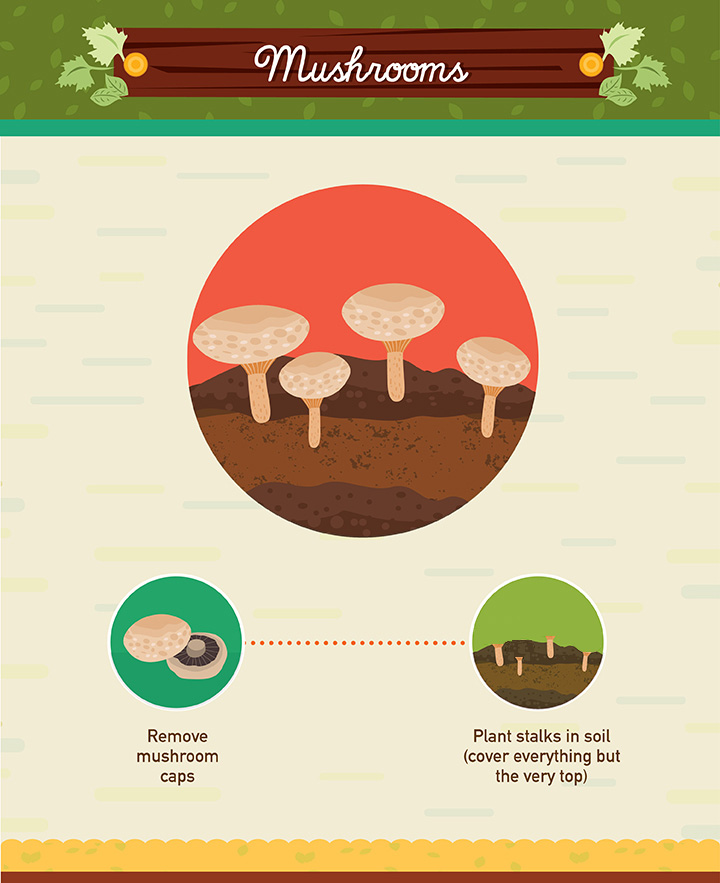
Be a fungi (or gal) and grow your own mushrooms from scraps.
Start by removing the mushroom’s cap; you only need the stalk. Plant the stalks in soil and cover everything except for the very top of the stalks. Harvest your mushrooms when fully grown.
{Instructions via My Heart Beets}
14) Onions
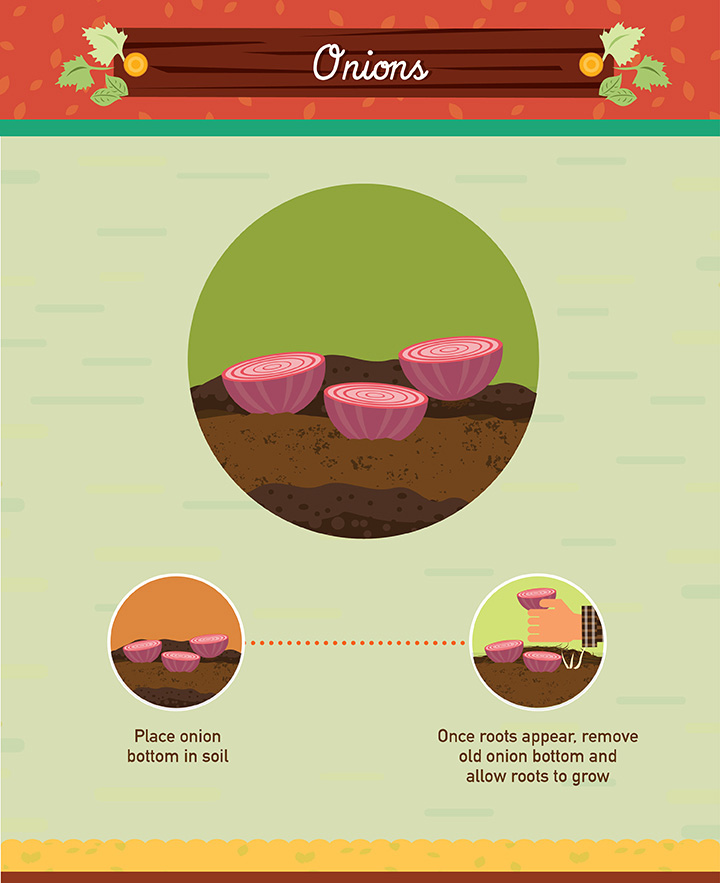
Here’s another simple one. Just place an onion bottom in the ground and it will regenerate its roots. Once roots appear, remove the old onion bottom and allow the roots to grow. Harvest when onions are fully grown.
{Instructions via Lifehacker}
15) Pineapple
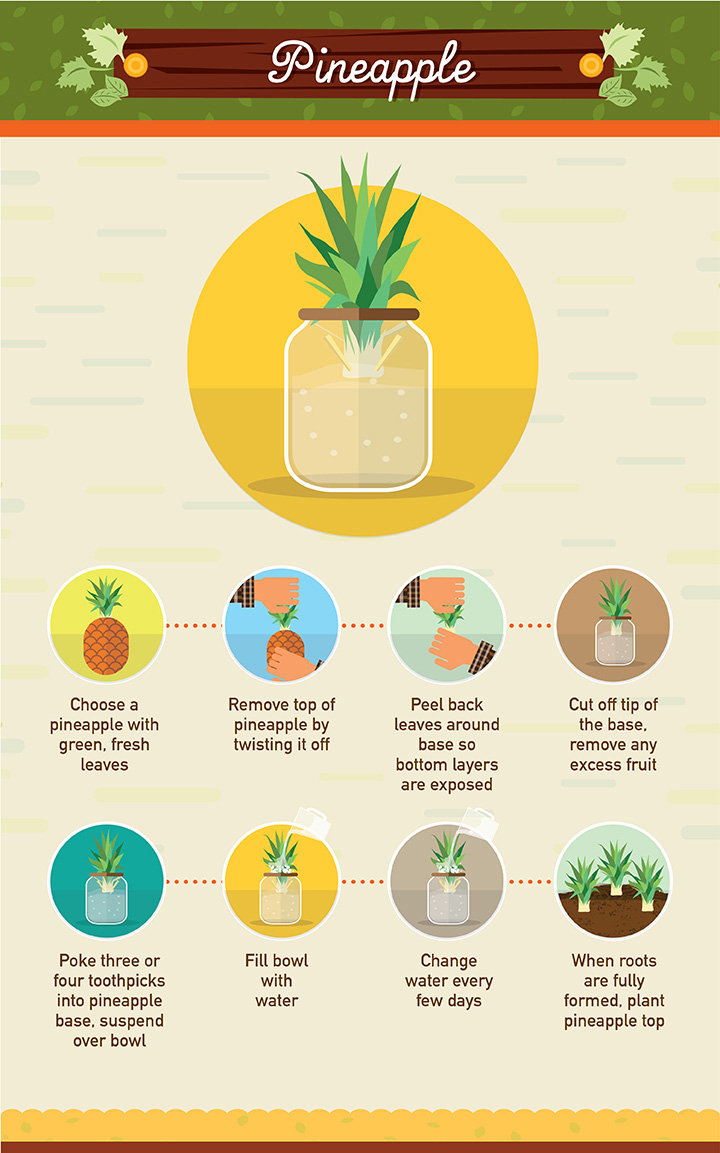
Here’s one for people who aren’t afraid of a long-term commitment. While it can take up to two years for a re-planted pineapple top to bear fruit, the satisfaction of growing your own pineapple is well worth the wait.
Choose a pineapple with green, fresh leaves. Remove the top of the pineapple, ideally by twisting it off (doing so will preserve the parts needed for regrowth). Peel back any leaves around the base so the bottom layers are exposed. Finally, cut off just the tip of the base, being sure to remove any excess fruit.
Next, poke three or four toothpicks into the pineapple base right above the area where you peeled back the leaves. Use the toothpicks to suspend the pineapple top over a glass container. Add enough water to the container to cover the base of the pineapple top. Leave the whole contraption in a sunny area, change the water every few days, and watch for roots to grow.
In about a week, roots should begin to form and the green leaves should be longer and wider. When the roots fully form, plant the pineapple top in a planter (or outdoors if you live in a warm climate). Make sure it is exposed to plenty of sunlight, and water it regularly. Expect a new pineapple grow in a few months.
{Instructions via 17 Apart}
16) Potatoes
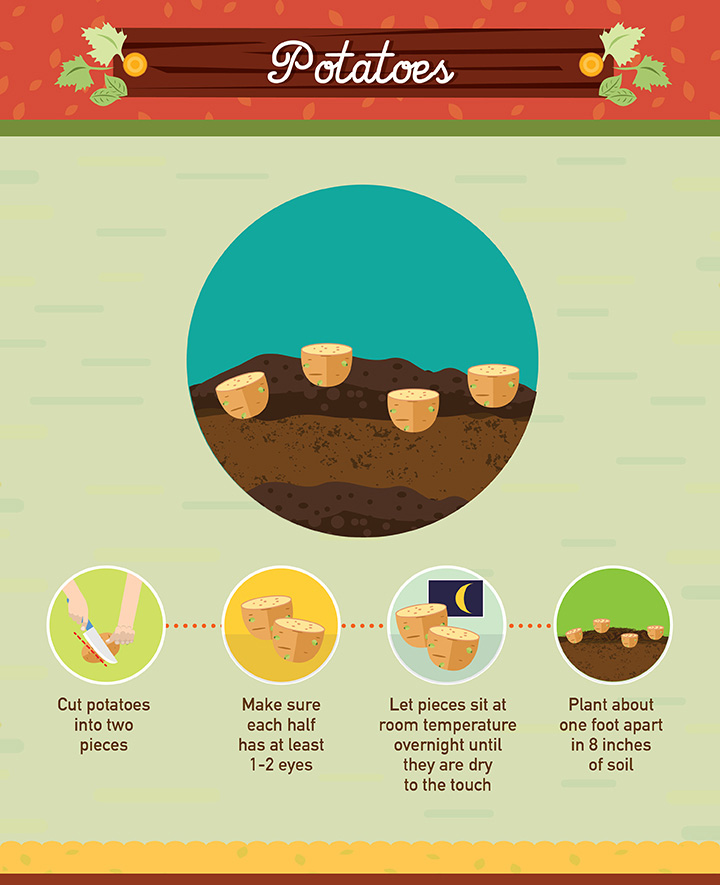
To grow your own potatoes from scraps, cut the potato(s) into two pieces, making sure each half has at least one to two eyes. Let the pieces sit at room temperature overnight or for a few days until they’re dry to the touch. Once the potato halves are dry, plant them about one foot apart in eight inches of soil. When they’re fully grown, potatoes can be harvested for several months—even after the plants die.
{Instructions via Cooking Stoned}
17) Pumpkins
Plant pumpkin seeds in a garden, spreading out the seeds in a sunny area before covering with soil. Don’t feel like harvesting the seeds? Just plant the entire pumpkin by filling it with soil and burying it in a garden. Harvest pumpkins when fully grown, then repeat the process with the new seeds.
{Instructions via DIY & Crafts}
18) Romaine Lettuce
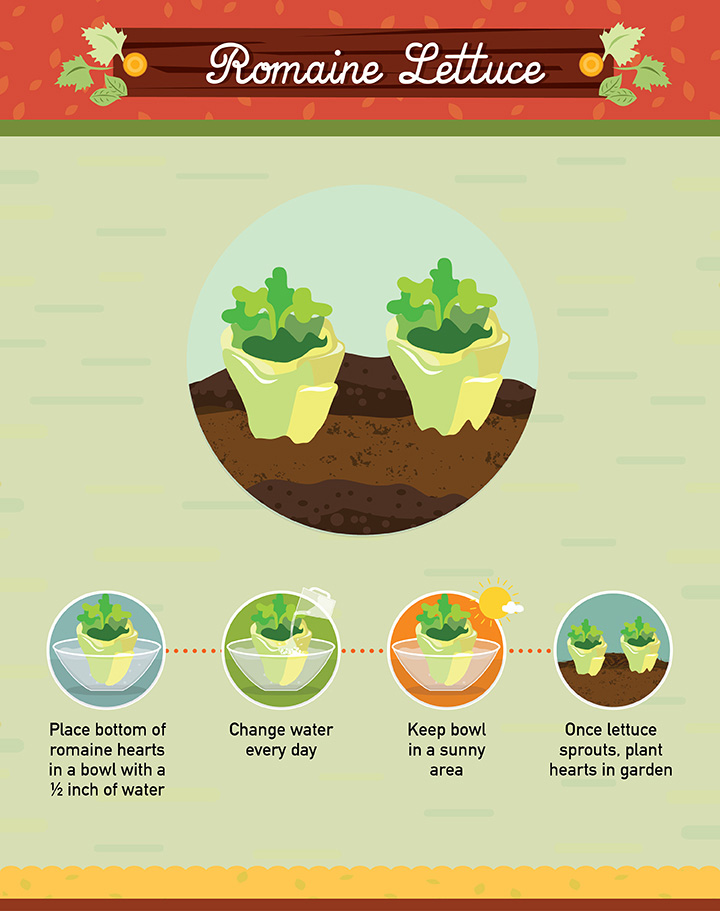
When you chop up hearts of romaine, set aside a few inches from the bottom of the heart. Place in a bowl with about a half inch of water. Keep the bowl in a sunny area and change the water every day.
In a few days, you’ll start to notice sprouts. Plant the sprouted hearts directly in the garden. If you like the taste of baby greens, you can pinch off outer leaves as the lettuce grows. Otherwise, harvest romaine when it’s around six to eight inches tall. If you want to continue growing lettuce, cut the romaine heads off right above the soil line with a sharp knife, leaving the base and root system intact. Otherwise, uproot the whole plant.
{Instructions via Lifehacker}
19) Tomatoes
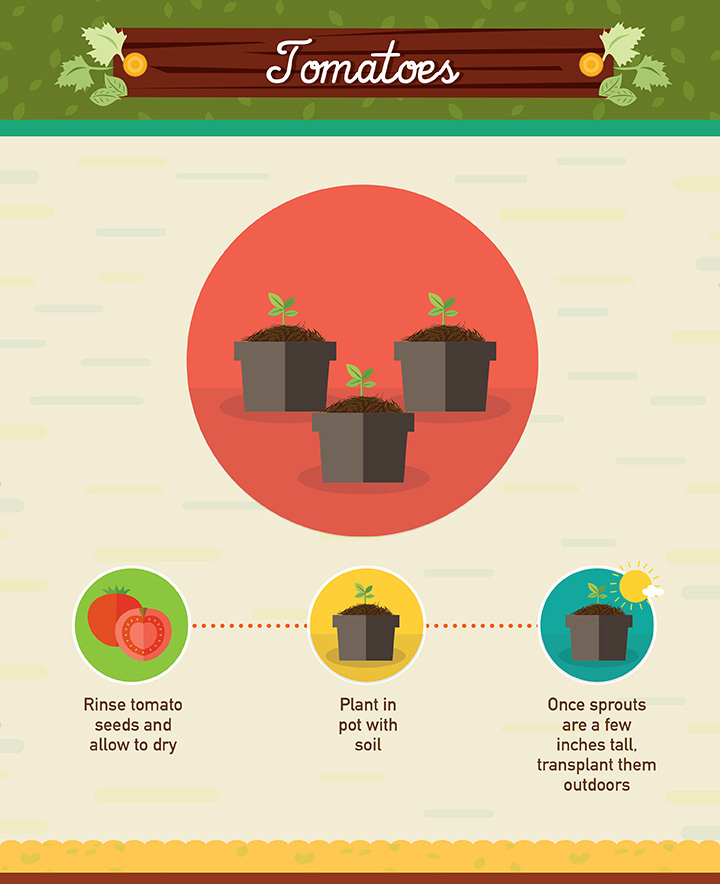
Instead of composting the messy insides of tomatoes, save the seeds and plant them. Rinse the seeds off and allow them to dry thoroughly. Next, plant them in rich potting soil in an indoor planter. Once the sprouts are a few inches tall, transplant them outdoors. Be sure to plant the tomatoes in a sunny area and water a few times a week.
{Instructions via DIY & Crafts}
[bctt tweet=”One person’s trash isn’t necessarily just another’s treasure.”]
In the case of food scraps, it can be the gift of life.

Pingback: Links to Inspire | spidermonkeywrites